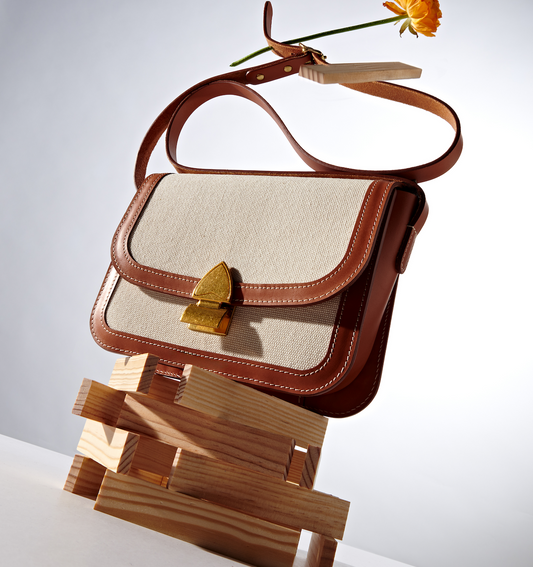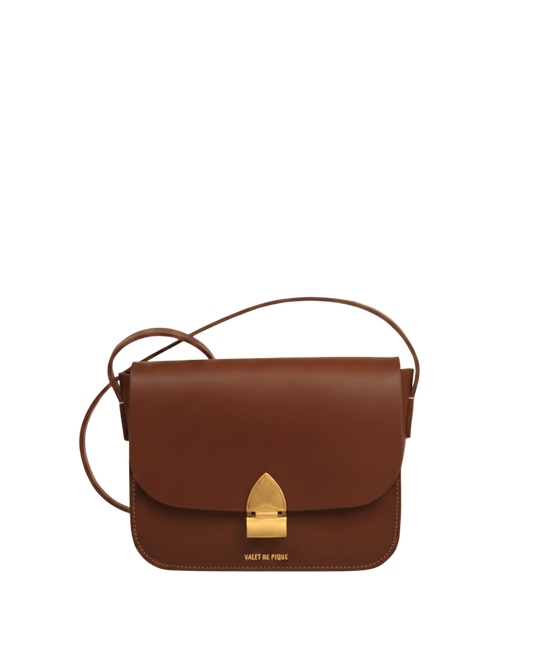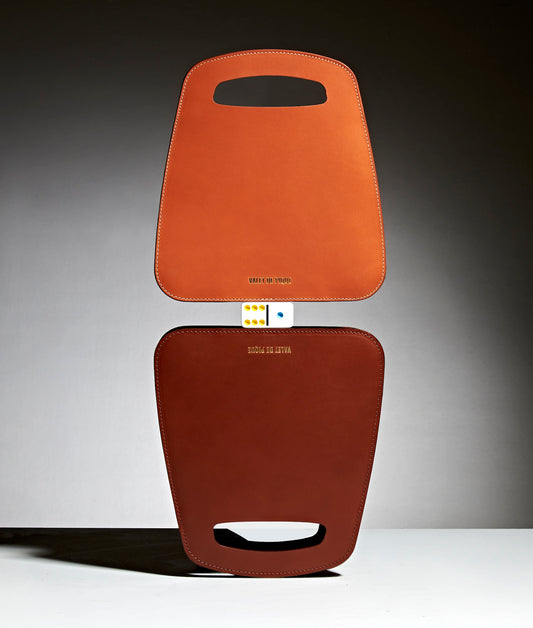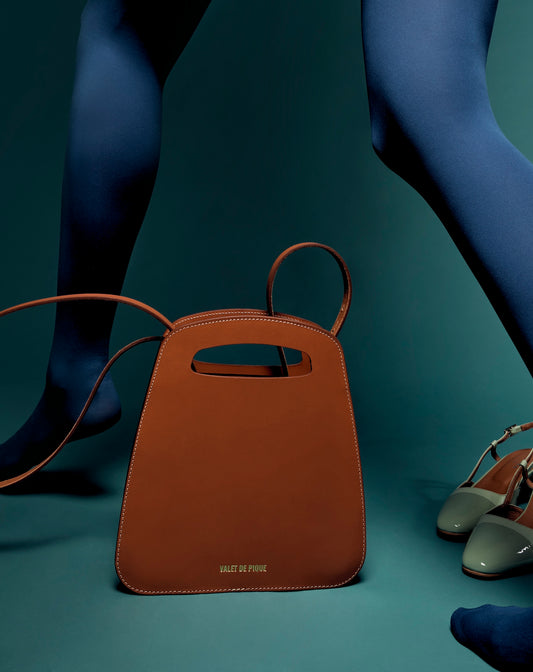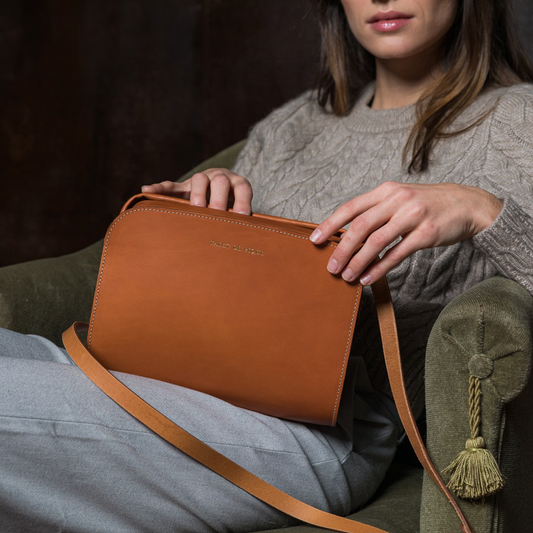Today, 800 billion pieces of clothing are purchased per year, 400% more than in the 1980s [1]. What does our consumption pattern tell us about society? How can we explain that today some of our clothes are "worth less than a sandwich" [2]? Wouldn't sustainable consumption finally mean refocusing on the same values as our grandparents, namely quality and durability? At Valet de pique, we try to revalue a way of buying that has almost been forgotten.
Lidewij Edelkoort - Anti-fashion
"FASHION HAS NOTHING MORE TO SAY
"How can a product that goes through so many transformations; being sown, growing, being harvested, combed, turned, knitted, cut and sewn, finished, labeled, wrapped and transported cost barely a few euros?"[3] asks analyst Lidewij Edelkoort in her manifesto Anti-fashion, which had the effect of a tsunami in the fashion world when it was released in 2015. The evidence is there: "fashion has nothing more to say". It seems to have been distorted by the requirement of productivity, the search for growth, the injunction of always more: "to young consumers, we teach that fashion is disposable, that a garment is abandoned like a condom even before loving it, appreciating it, getting attached to it" laments Lidewij Edelkoort.
Fast Fashion
EVERYTHING AND ALWAYS MORE
Thus, the brands produce clothes in the chain, going up to propose 52 collections per year. What happened to the 4 annual seasonal collections? This quasi-permanent renewal intended to push consumer desires further in a "society of the spectacle" [4], has catastrophic consequences on the environment. Fashion has risen to second place in the ranking of the most polluting industries in 2019. The whole point of "FastFashion" (H&M, ZARA, etc.) is to offer ever more attractive prices according to the principle of economy of scale: the more you produce, the cheaper the product. At the expense of quality, working conditions and the environment.
TOWARDS SLOW FASHION?
If our way of consuming is directly linked to the immediacy and speed of our current society, an awareness has been initiated in recent years. Indeed, Slow Fashion, the fact of consuming less and better, is gaining ground. Another way of naming this trend is "deconsumerism". According to a recent study by the IFM (French Fashion Institute), 44% of those surveyed said they bought less clothing during 2018 than in previous years. Although for 60% of them this deconsumption is forced (rising prices and budgetary arbitrage), the remaining 40% do so consciously and by choice. Among the reasons mentioned, there is the concern to "consume less but better for ecological and ethical reasons" [5]. Awareness is urgently needed and the truth must be revealed about the real conditions under which a large part of the clothing sold is manufactured.
LET'S LISTEN TO OUR GRANDPARENTS
However, deconsumerism, Slow Fashion, wouldn't it be simply going back to the values that were ours not so long ago? Out of curiosity, we asked our grandparents how they buy their clothes. Because yes, they don't talk about "consuming".
Very important for our elders and especially for our grandmothers: the cut, the price, the quality. "What I buy, I buy well", testifies Colette. P, 88 years old. "I don't buy for one season only!" warns Odette. G, 99 years old, a great fashion lover who has seen a century of trends go by: "a good suit, a good coat, it lasts 5 years". Also noteworthy, even without ecological awareness, our grandparents seem to have the reflex to systematically look at the composition of the garment and its place of manufacture: "I look for the maintenance of the garment, because I can no longer go to the dyer as often as before" tells us Colette. Yes, a garment, we took care of it. And when we ask Odette what she thinks is the price of a quality T-shirt, she answers "what do we call a T-shirt now? It seems that in addition to the basics, we have also lost our vocabulary. Anyway, for Colette as for Odette, a "good" T-shirt is on average 50€ and not the price of a sandwich.
More than a trend, "sustainable consumption" is experienced in a rather natural way by seniors: "in parallel with generational evolutions, seniors testify in many respects to behaviors that pre-existed the "consumer society", mass consumption in which younger generations were immersed" [6]. 6] In their consumption habits, there is a "search for things that last, that are solid, that we can count on" [7]. 7] While we teach our grandparents how to take pictures or write a text message, it seems that they too have a lot to teach us.
- Claire Doisy
Bibliography :
Debord Guy. The society of the spectacle. Gallimard. 1996.
Lelièvre Marie-Dominique. Li Edelkoort: "Fashion has nothing more to say". Libération. 08/05/2015.
Mathe Thierry, Hebel Martyne, Perrot Delphine, Robineau Delphine. How do seniors consume? Cahier de recherche. December 2012.
Morgan Andrew. The True Cost. Release date: May 2015.
[1] Morgan Andrew. The True Cost. Release date: May 2015.
[2] Lelièvre Marie-Dominique. Li Edelkoort: "Fashion has nothing more to say". Libération. 08/05/2015.
[3] Ibid.
[4] Debord Guy. The society of the spectacle. Gallimard. 1996.
[5] Menon Tiphaine. Slow Fashion: the praise of slowness. Paris Match. 10/09/2019.
[6] Mathe Thierry, Hebel Martyne, Perrot Delphine, Robineau Delphine. How do seniors consume? Cahier de recherche. December 2012.
[7] Ibid.






